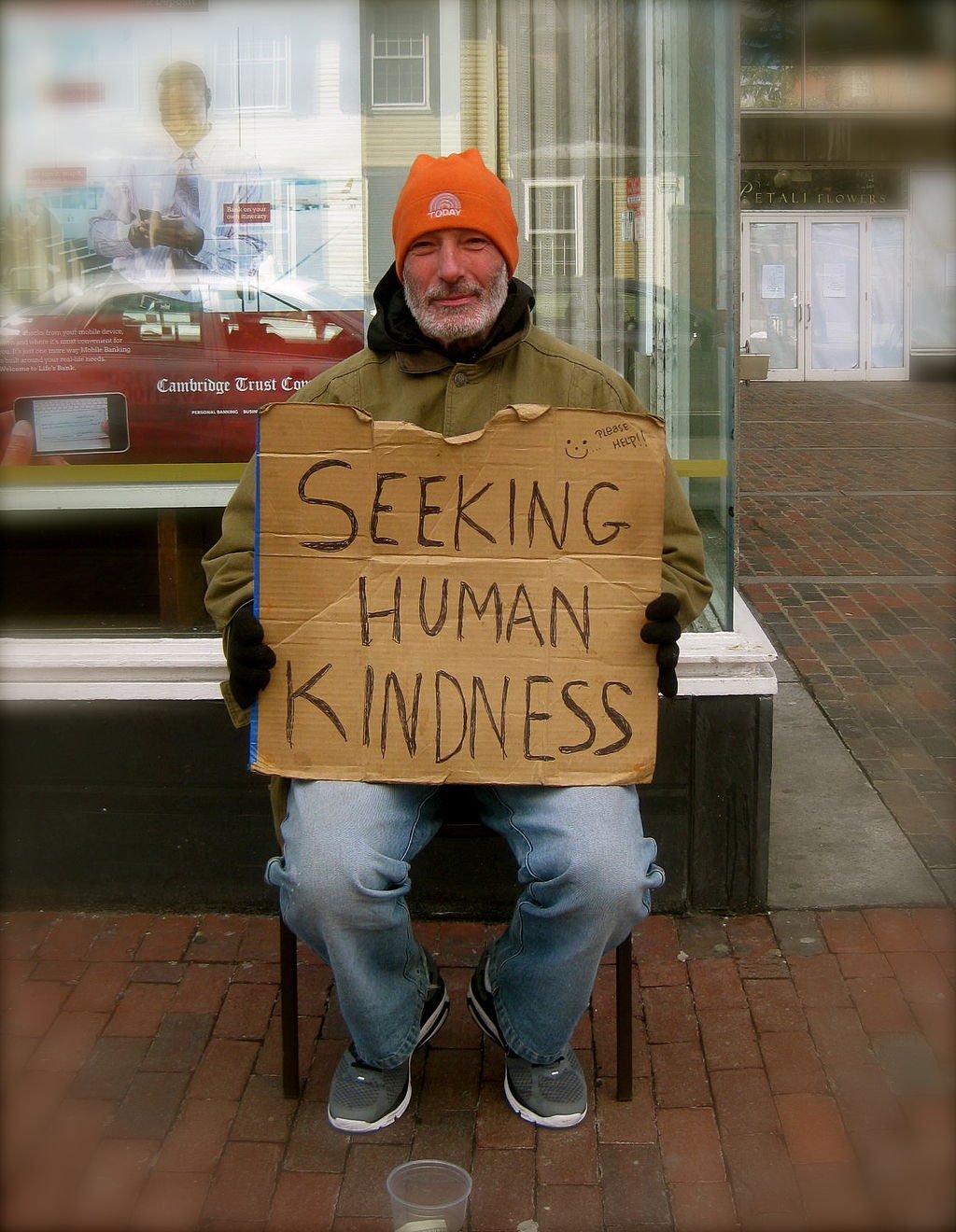
Shailly Gupta Barnes: Census data show that anti-poverty programs work
Homeless man in Boston
— Photo by Enver Rahmanov
The Town Farm, in Easthampton Mass. Now called the Easthampton Lodging House, it’s an historic poor farm at 75 Oliver St. It was established in 1890 as an inexpensive way to provide for the town's indigent population, and is the only locally run facility of its type to survive in the state. The property was listed on the National Register of Historic Places in 1996. Poor farms, which housed the penniless, some of whom paid for this with farm work, were a feature of many New England communities into the 20th Century.
— Photo by John Phelan
Via OtherWords.org
The U.S. Census Bureau recently reported that poverty dropped notably in 2021. Amid a pandemic and widespread economic pain, this is a significant accomplishment.
There are three lessons here — about government programs, about how we measure poverty, and about how far we have left to go.
First, these numbers show that government programs work. After Social Security, refundable tax credits like the expanded Child Tax Credit (CTC) and stimulus payments were the biggest contributors to reducing poverty.
Without them, over 20 million more people would have been poor last year. The expanded CTC alone lifted millions of children above the poverty line and reduced racial inequities among poor children.
These programs worked because they departed significantly from how anti-poverty programs have worked for the past 30 years. They provided direct cash transfers to recipients, without any work requirements or bureaucratic indignities.
Welfare-rights organizers have been pushing for these changes for decades. This year, they were proven right.
But unfortunately, official federal poverty figures still conceal the true number of people who are struggling — and underestimate the scale of our responsibility to help them.
At just $31,000 for a family of four, the federal government’s Supplemental Poverty Measure, or SPM, is far too low. That’s less than half of the typical cost of living for a family this size in rural Mississippi, or just one-third for Chicago. And the official poverty measure, or OPM, is even lower.
I’m the policy director of the Poor People’s Campaign, which defines poverty to include everyone living up to 200 percent of the SPM.
Using this measure, which is still less than median income, we counted 140 million people — or 43 percent of the country — who were poor or one emergency away from being poor before the pandemic. In 2021, this rate went down to about 34 percent, or 112 million people.
This is a significant decrease. But it means over a third of our nation has little to celebrate.
In fact, the population living between 100 percent and 200 percent of the SPM threshold stayed basically the same between 2020 and 2021: nearly 90 million people, just one emergency away from poverty. If we only looked at the poverty rate, we would have missed them entirely.
That means we can and must do more. The expanded CTC expired in December 2021, and there has been no further discussion of reviving stimulus payments — even with the federal minimum wage at its lowest value in 66 years and the cost of living continuing to rise.
This is not to minimize the gains we’ve made. They just remind us that poverty is a policy choice — and fortunately, we can make different choices.
In 2020, there were over 80 million eligible poor and low-income voters. Fifty million of them voted in the presidential contest, accounting for a third of the electorate overall and even higher percentages in key states in the Midwest and South.
These voters share a common interest in securing health care, living wages, decent housing, and safe schools for their kids. If they could be organized to take action together — across race, religion, and other lines of division — we could advance the moral policies we need to fully address poverty.
“What’s hurting me in Kentucky is hurting you in Alabama, in West Virginia, and across the nation,” said Tayna Fogle, a leader in the Kentucky Poor People’s Campaign, earlier this year.
“Can you imagine all the poor and the low-income people coming to the ballot box?” she asked. “What if we did everything we could to make sure that our vote counted? We could overturn this madness that’s going on.”
If poor people vote in the midterms like they did in 2020, we could make another leap towards ending the madness of widespread poverty in the midst of plenty.
Shailly Gupta Barnes is the policy director for the Poor People’s Campaign: A National Call for Moral Revival and the Kairos Center.



